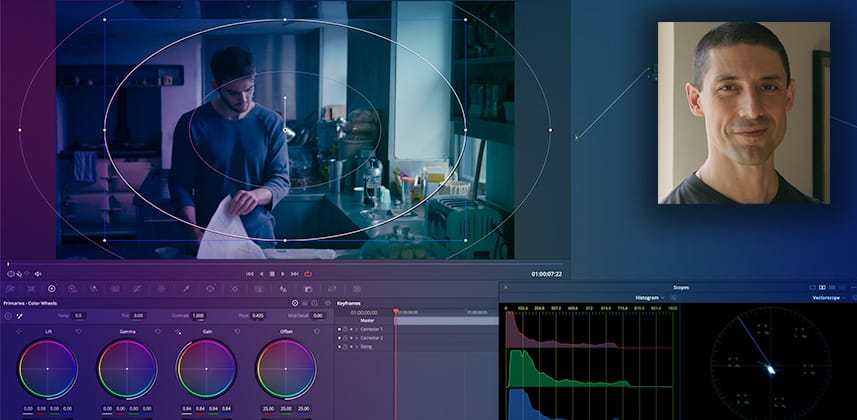| Series |
|---|
Motivated Vignettes – What are they and how do you create them?
Vignettes are one of the first adjustments I was exposed to when I began color grading, and like many colorists, I became a bit addicted — they always seemed to add some extra depth and focus to the shot. As my craft matured, I often wondered: should I use vignettes all the time? And: When shouldn’t I use them?
As is usually the case in color grading, the answer requires more nuance than “always” or “never,” and we also need to think not only about when we use vignettes but how. This is our focus in today’s Insight. We are exploring what vignettes do for us, situations where they’re more or less appropriate, and how to deploy them in a motivated and photographic manner.
Key Takeaways
After watching this Insight, you should be able to understand:
- How to think about vignettes as a complement to nailing our exposure — rather than a substitute for it
- Where to apply vignettes judiciously when we want to add more “weight” while keeping a healthy level on our subject
- How to use vignettes more photographically, rather than always drawing the same shape regardless of lighting conditions
Related Insights
- Premiere Pro Color Grading: Working with Vignettes to Control the Eye – Step 3 in our ‘Premiere Pro Color Correction Protocol’ is to control the viewer’s eye. Learn how—by working with vignettes and custom masks.
- Advanced Windows – Difficult Shape Masking – We take a look at difficult shape masking and combining multiple windows in DaVinci Resolve to give you total control over difficult images.
Questions or Comments?
Vignettes are a topic that colorists love to dig into. Use the discussion below to share with us how your use of vignettes have changed over time. If you’re new to the topic, let me know if I helped you alter your way of thinking (and how so)?
– Cullen
Member Content
Sorry... the rest of this content is for members only. You'll need to login or Join Now to continue (we hope you do!).
Need more information about our memberships? Click to learn more.
Membership optionsMember Login


